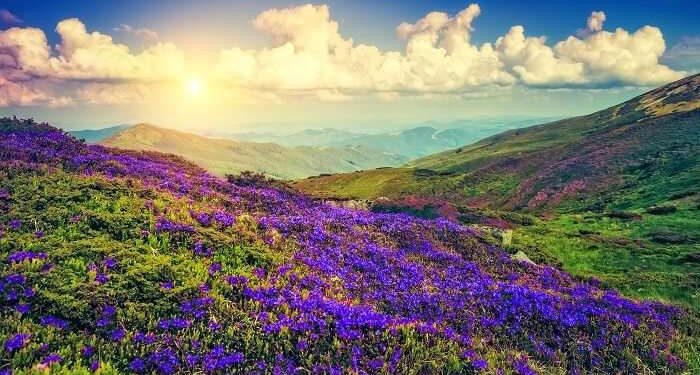Kurinji or Neelakurinji, scientifically known as Strobilanthus kunthianus, is a shrub that grows in the shola forests of the Western Ghats in South India. The plant is named after the famous Kunthi River which flows through Kerala’s Silent Valley National Park, where the plant occurs abundantly. The Kurinji plant belongs to the genus Strobilanthus, family Acanthaceae and was identified in the 19th century. The genus has about 250 species. Out of that, around 46 species are found in India. Kurinji grows to a height of 30 to 60 cm and is found at an altitude of 1,300-2,400 metres. The Paliyar tribal community that lives in the montane rain forests of the South Western Ghats uses the flowering periodicity of this plant to calculate their age.
Neelakurinji was first sighted in the year 2006, in Tamil Nadu and Kerala. Kurinji flowers were again witnessed in the year 2016 in Udhagamandalam in their full glory. The flowers then bloomed after 12 years when the state government, to commemorate the rare sighting, released a stamp and declared the year as the year of Kurinji. Further, the last kurinji bloom in Munnar was in 2006, and the spot again witnessed the flowers bloom in the year 2018, after exactly 12 years. Recently, this rare flower bloomed in mandalpatti hill in Kodagu, kote betta and also kumara parvatha in Karnataka state. The flowers were first spotted first around early August when the entire region was covered by a purple blanket of flowers. As the days followed, more Hills were covered by these rare flowers. There has been a significant increase in the number of trekkers who are planning to visit Kodagu to elevate the overall experience of their tour.
Kurinji is a species that deserves our attention. The habitats of this plant species, such as the shola forests and the grasslands have been converted into tea and coffee plantations. Indiscriminate planting of exotic species like Pinus, Wattle and Eucalyptus on a large scale also have encroached upon the original habitats of this rare plant species. Increase in tourism, encroachment, water depletion and deposition of plastic waste have further degraded the ecosystem. It is very essential to maintain and improve the ecosystem without any further degradation and depletion.



















Discussion about this post